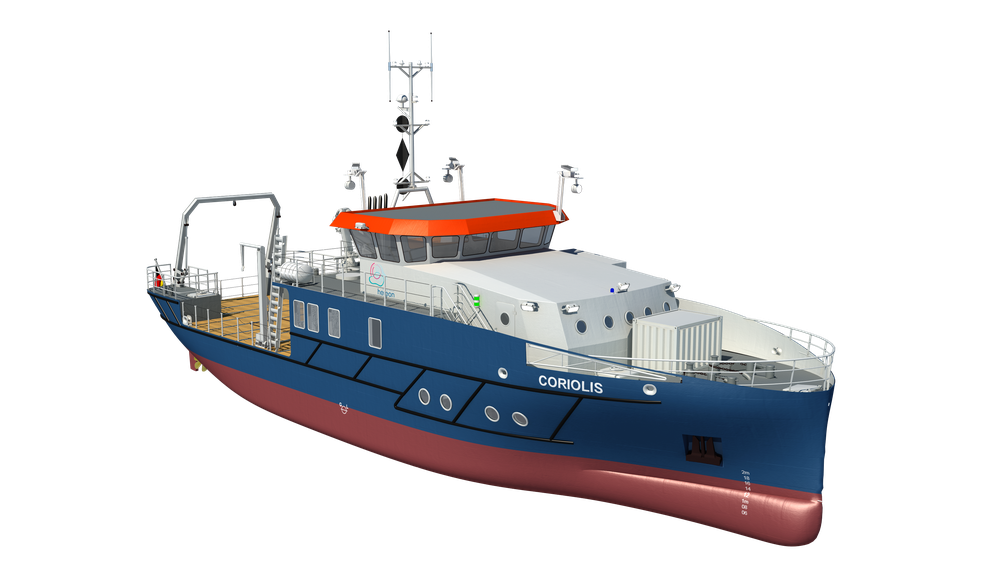Optimisation and Demonstration of Hydrogen-based Energy System
The research vessel Coriolis, currently under construction at the Hitzler shipyard in Lauenburg, is a new build of the Helmholtz Centre Hereon. Its main objective is to conduct research in coastal areas of the North and Baltic Seas. The ship will also be equipped with an innovative propulsion concept, the first of its kind. HEREON and DLR Institute of Maritime Energy Systems have designed a hydrogen system laboratory (H2SL), which they will operate jointly once the vessel is operational in order to gather valuable operational data and experience. The H2SL consists of an LT-PEM fuel cell and a metal hydride storage system for hydrogen. The cooling water waste heat of the fuel cell will be used to desorb the hydrogen out of the storage. The fuel cell with an electrical output power of 100 kW, in combination with the onboard battery, will be able to operate the vessel in various operating modes with zero emissions.
Compared to the storage of hydrogen in liquid or compressed form, metal hydrides offer various advantages. One significant advantage is that the prevailing pressures and temperatures are considerably more moderate. In addition, the form of the tank storage can be designed to be highly flexible. As a result, it is feasible to adapt the storage tank to the structure of a ship and thus achieve positive effects in terms of spatial utilisation or ship stability. Driven by the goals of the IMO's greenhouse gas reduction targets, innovative sail technologies are an interesting way of reducing emissions. Sailing forces act far above the ship's centre of gravity. In order to compensate these forces and prevent the ship's hull from heeling too much, large quantities of ballast water are usually required in the hull. With the integration of metal hydride tanks, the unnecessary ballast mass can be replaced by a useful storage system for hydrogen as alternative fuel.
The objective of the LP II project is to investigate a coupled system comprising of fuel cell and metal hydride tank under real operational conditions. In addition, novel energy management concepts are to be developed to maximize the overall system efficiency by distributing the loads smartly on the combustion engine, fuel cell and battery. Furthermore, the DLR Institute of Maritime Energy Systems will develop predictive maintenance strategies and algorithms for digital twin applications based on the comprehensive operational data.
Contact
Dr. Dheeraj Gosala

